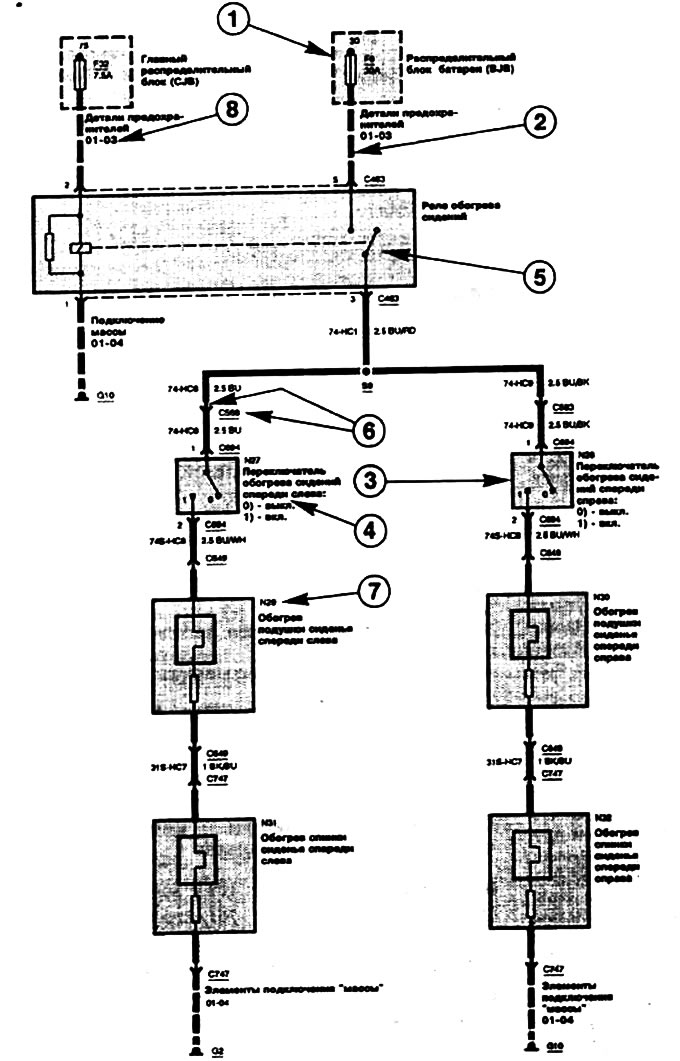If a malfunction occurs in the electrical equipment, or you need to additionally install an electrical unit, then in this case you cannot do without electrical circuits. The electrical circuits shown in the diagrams must be closed, otherwise no electric current will flow. For example, it is not enough that voltage is applied to the positive contact of the headlight, you also need to connect the electrical circuit to "mass".
Therefore the wire "masses" The battery is also connected to the body. However, this connection with "weight" is not enough, and the corresponding current consumers have a wire of direct connection with "weight" with brown insulation. Switches, relays, fuses, meters, electric motors and other electrical elements can be included in separate electrical circuits. In order to connect the electrical elements correctly, their individual contacts have the appropriate terminal designations. In order to navigate when working with circuits, the individual current circuits are arranged vertically next to each other.
The wiring diagram above shows the positive contacts (+) current circuit, and below - contacts "masses". Communication with "weight" usually carried out directly through the vehicle body or via an additional wire from a connection point located on the body "masses".
Attention! The image of electrical elements and wires in the diagrams is not to scale. For example, a wire more than a meter long is shown in the diagram in the same way as a wire several centimeters long. In addition, connections within complex electrical elements are presented in a simplified manner.
The most important terminals
Terminal 15 powered by the ignition switch. Current flows only when the ignition is on. The wire is usually green or green with colored stripes.
Terminal 30. Battery voltage is always applied to this terminal. The wire is usually red or with colored stripes.
Terminal 31 connected to "weight". wires "masses" usually black.
In electrical circuits for individual wires, designations are introduced, consisting of a combination of letters and numbers.
Example: 31S - ASZA/1.5 BK/RD
31 = terminal 31 ="weight" (-)
S = electrical wire included in addition (not serial)
AC = system (AC = distance adjustment)
ZA = connection: 3 = wire number, A = branch designation
1.5 = 1.5mm2
VC = main color (VC = black)
/RD = marking color (RD = red)
Abbreviated designations for the color of electrical wires in the diagrams
- VC = black
- GY = gray
- BN = brown
- LG = light green
- BU = blue
- OG = orange
- GN = green
- RD = red
- SR = silver
- WH = white
- VT = purple
- YE = yellow
Seat heating

1 - Shaded block. Represents a partially depicted electrical unit.
2 - Broken line. Indicates two or more actuators.
3 - Switch. Always shown in original condition (switched off).
4 - Notes. They give additional information on individual electrical elements.
5 - Electrical element: here is the relay. Power switching is indicated in the electroelement in order to explain its functions.
6 - Connector. CN is the connector designation.
7 - Designation of the electrical element.
8 - Link to additional FORD schemes. Without picture
9 - Curly brace. Curly bracket indicates the difference between the individual equipment options.
10 - Triangle at the beginning of the electrical wire: Indicates the transition of communication from one electrical circuit to another (the numerical code indicates the internal designation of FORD).
11 - Curved dividing line: the electrical element is in the following diagram.
Visitor comments